Published
on 25
Jun 2011
|
All rights reserved.
|
|
|
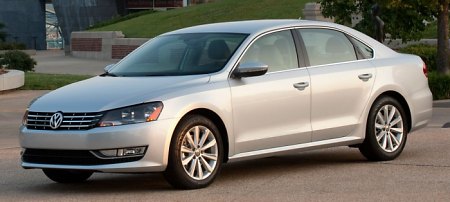
Under the leadership of
Martin Winterkorn and Ferdinand Piech, Volkswagen group set a very
ambitious target: it wants to sell 10 million cars a year and become
the world's number one car maker by 2018. To realize that target, it
needs to increase sales in all regions. One of the most trickiest is
the United States. Although the group has been successful in most parts
of the world, its sales remains weak in the USA. Last year, it sold
only 358,000 vehicles there. This sounds like a joke compare with
Toyota (1.8 million units), Honda (1.2 million units), Nissan (909,000
units) and Hyundai-Kia (894,000 units), let alone domestic players GM
(2.2 million units), Ford (1.9 million units) and Chrysler (1.1 million
units). Among them, only 257,000 units are attributed to the Volkswagen
brand, which is supposed to be a mass market brand like the
aforementioned rivals. While this shows its weakness in the US market,
in the flip side it implies enormous potential for growth – if
Volkswagen can sort out its problems.
The new plan calls for increasing the sales of Volkswagen brand
vehicles to 800,000 units in 7 years time. How to do that ? The answer
is not unlike those taken by its Japanese and Korean rivals –
localization.
Volkswagen shall tailor-make its cars for the taste of American, which
means more space for less money. It shall offer the kind of product mix
that the US market needs. Also, production shall be localized to reduce
costs and the risks of currency fluctuation. Three new vehicles will be
responsible for this task – the recently launched new Jetta, the new
American-market-only Passat (to be discussed here) and a stillborn
mid-size SUV. The Jetta is being produced at Mexico, while the other
two will be assembled at the company's brand new factory at
Chattanooga, Tennessee state of USA.
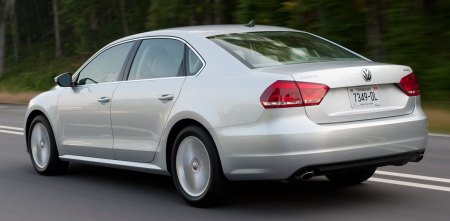
The North American Passat is very different from the European-designed
Passat offered in the rest of the world. It is a lot larger – some 96
mm longer, 15 mm wider and 15 mm taller. Its 2805 mm wheelbase is
longer than the European car by nearly 100 mm. So large that I suspect
Volkswagen China / SAIC could be interested to use it to replace the
aging Santana. The benefit is a lot of cabin room, of course. According
to EPA measurement, its rear seats offer 35 mm more legroom, longer
than arch-rival Toyota Camry and Honda Accord. The front seats get
an extra 25 mm legroom. The trunk is also larger than its rivals.
Volkswagen has really listened to the voices of
American motorists.
The styling is deliberately conservative. While its European sibling
looks sleek and contemporary, the American version is as rectangular as
a piece of gold brick. American customers may not be all that
conservative – just look at the fast-selling Hyundai Sonata and you
will see – but VW apparently chose a more self-restrained path to
distinguish itself from the competition. It could be more appealing to
higher age groups that prefer understated elegance. A closer inspection
to the design details will find the Volkswagen is a well thought-out
design with some fine detailing and a high level of refinement. It
fails to catch attention at first sight, but hopefully it will grow on
you as time goes by.
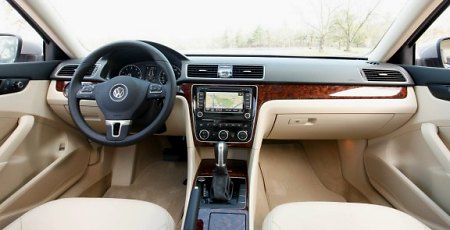
The interior design is even more conservative. Nevertheless, it is well
laid
out and intuitive to use. Build quality and material richness are not
up to the standards of its European sibling, especially if you look at
small details like the interior finishing of glovebox, the cupholders
or the less than oily operation of switch gears, but at least it won't
give you a cheap feeling like Jetta. Compare with its Japanese rivals,
it has a slight edge in the soft-touch plastics, noise insulation and
especially the solidity of construction. The German engineering running
behind it
is still recognizable. Moreover, for the first time the mid-size
Volkswagen sedan offers near class-leading space. 5 large guys can sit
comfortably.
In the US, the car starts at just over US$20,000, some $7,000 less than
the outgoing car. This put it on the same plane as its Japanese rivals.
Naturally, cost saving is a big concern in its making. The Passat saves
money in various ways. Firstly, production cost in the America is lower
than that in the Western Europe, especially taking shipping into
account. Save the engines, 90 percent of its components are locally
sourced. Secondly, it abandons the sophisticated European-built 2.0
TFSI engine for lower tech and cheaper 2.5-liter inline-5 and 2.0 TDI
engines, which are produced in Mexico and US respectively. Only the
range-topping 3.6 VR6 is imported from Germany, but then it is expected
to be a minority choice. Thirdly, the aforementioned downgrade in
exterior sophistication and interior quality helps saving costs.
Lastly, by reducing the trim combinations to only 16 from the previous
128, it improves production and sales efficiency.
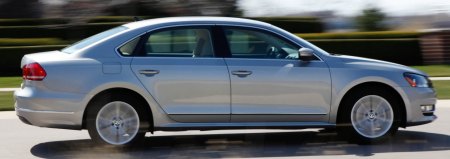
The cost cut means its dynamics is somewhat compromised. We love the
outgoing car's 200hp 2.0
TFSI engine a lot. It could be the most versatile engine in the class,
being usefully punchy, flexible, refined and frugal. In contrast, the
170hp 2.5-liter straight-five is nowhere as desirable. It might be a
little smoother and more characterful than the Japanese rivals' large
four-pot
engines, but it is underpowered and far from quiet. Not very frugal
too. To
many, the 140hp 2.0 TDI common-rail turbo diesel might be a better
option, although it costs quite a lot more to purchase. Mind you, it is
even slower, but its extra mid-range torque aids real-world overtaking,
motorway refinement as well as mileage.
Very few people will choose the
flagship 3.6 VR6. As we found before, its on-paper power (280hp) is not
completely reflected on its real-world performance, blame to a peaky
torque delivery and the extra weight it carries. Not even the very good
DSG gearbox
could save the game. You will enjoy its smoothness and sound quality
though. Still, it may not be worth the extra cost and fuel bills.
Anyway, the VR6 is going to extinct sooner or later. I hope by then
Volkswagen will bring back the 2.0 TFSI, preferably in higher output
form.
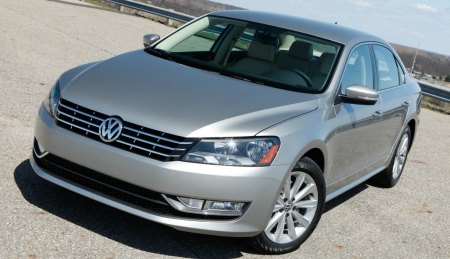
The American Passat shares its basic suspensions with the European car,
i.e. MacPherson struts up front and multi-link setup at the rear.
Predictably, its fine tuning shifts slightly towards the comfort side
in order to please American motorists. Despite that, it shows typical
European handling, with taut body control and good resistance to
understeer. Only a mushy brake pedal and, in the case of 2.5-liter car,
a sub-standard hydraulic power steering prevent it from matching the
European Passat. However, its best quality is refinement. The ride is
smooth and composed, the chassis feels solid and the cabin is
significantly quieter than its Japanese and Korean counterparts. As a
result, it feels more like a premium product.
Fans of the outgoing Passat might be puzzled with the slightly
downgraded styling, build quality, steering and powertrain, but the
American version is still good enough to beat its grassroots rivals in
the US market, even though I suspect the next generation Accord and
Camry may give it a hard time. Volkswagen plans to sell 100,000 units a
year in the US from next year. While it is a sharp increase from the
12,500 units registered by the European-designed Passat last year, it
is still a conservative target compare with its Asian rivals which
managed 300,000 to 400,000 units in good years. Imagine if Volkswagen
can build its TFSI engines in the America for the car, its sales
potential could be really substantial. Wolfsburg, think about it !
|
Verdict:     |
|